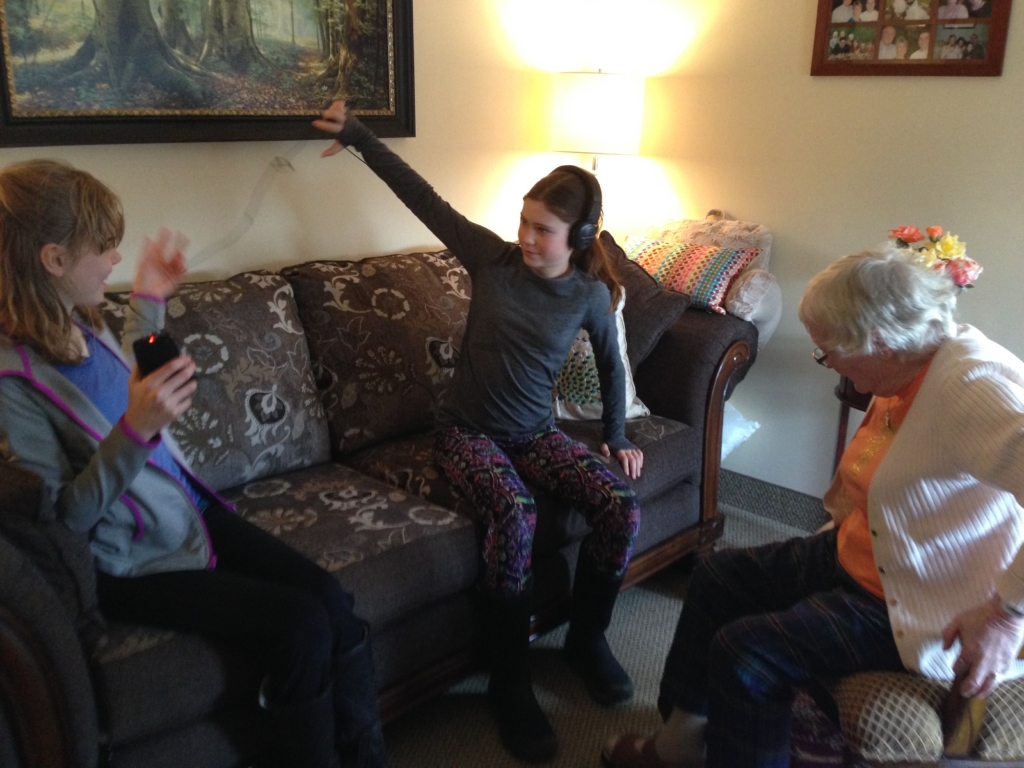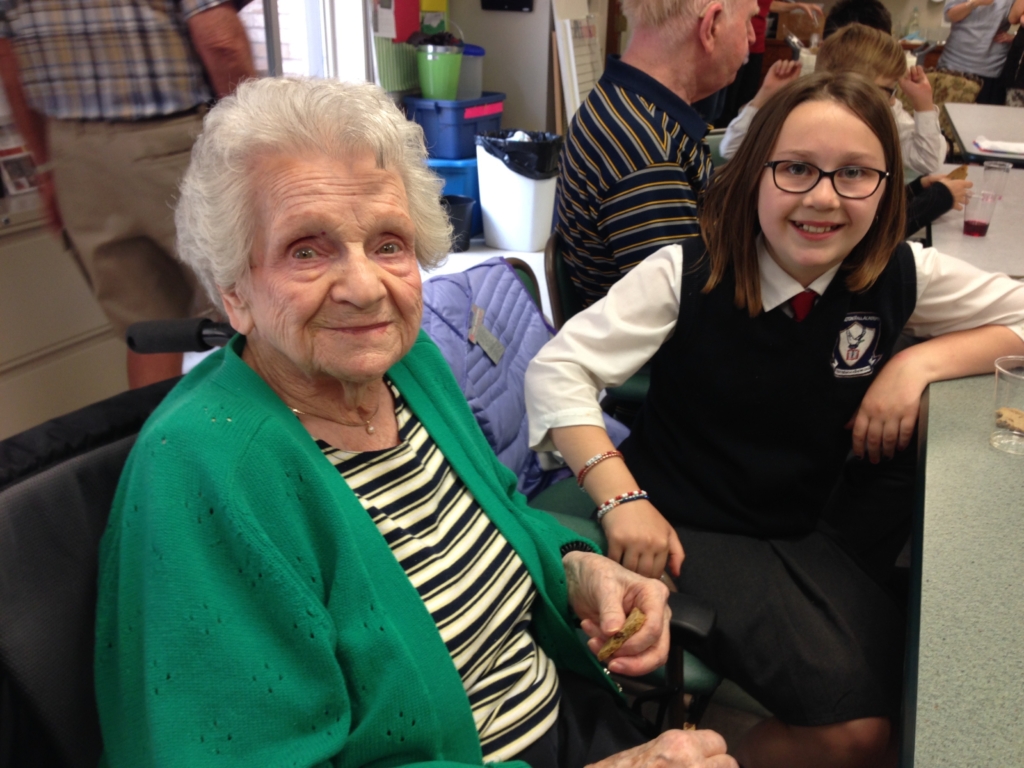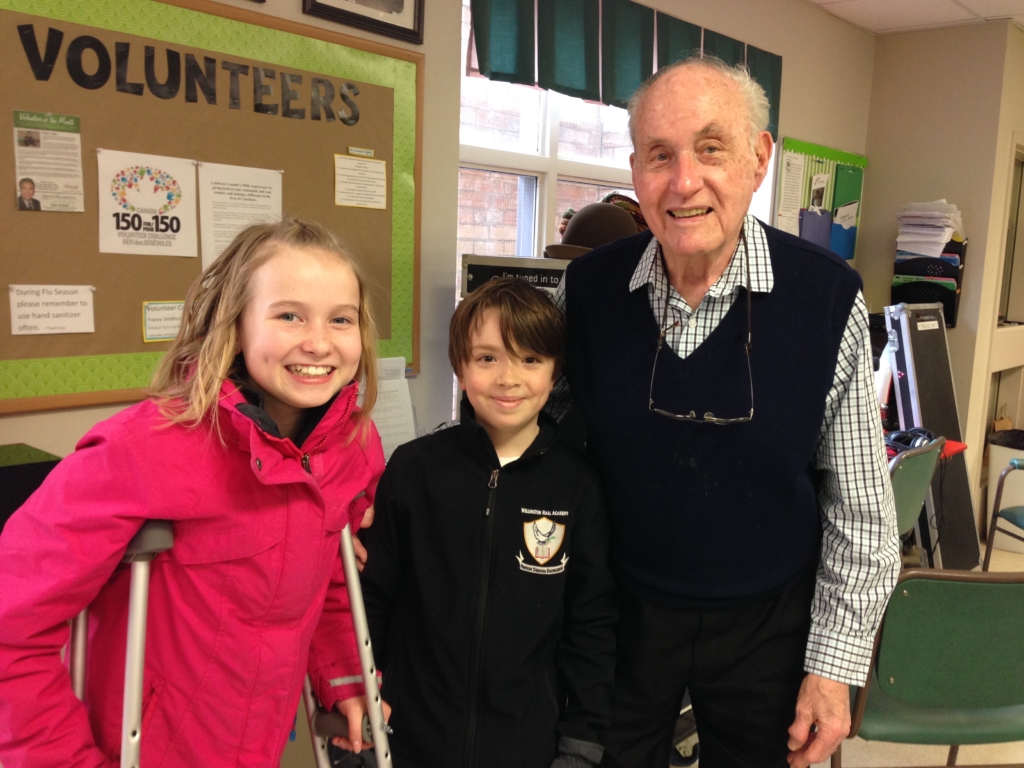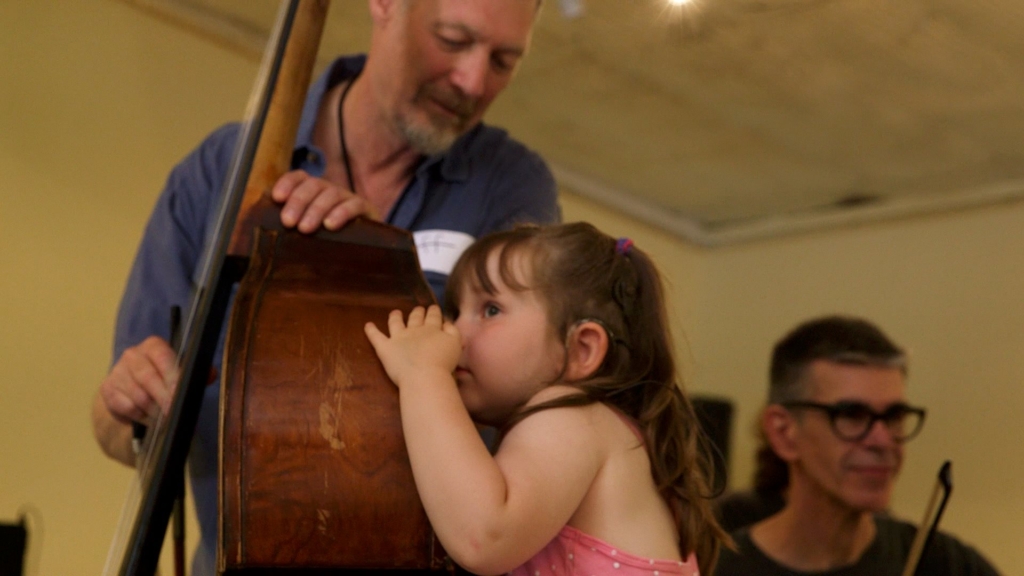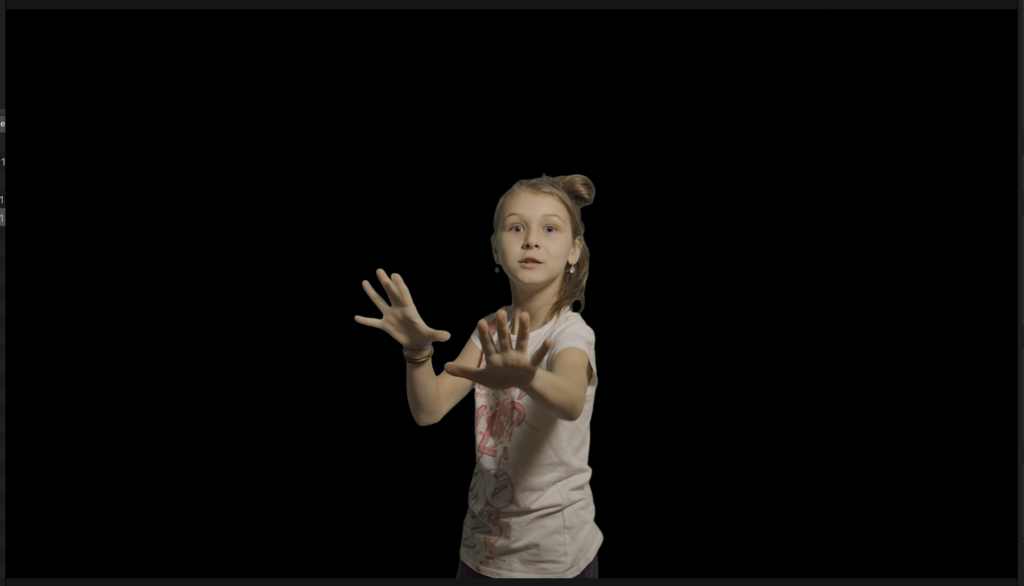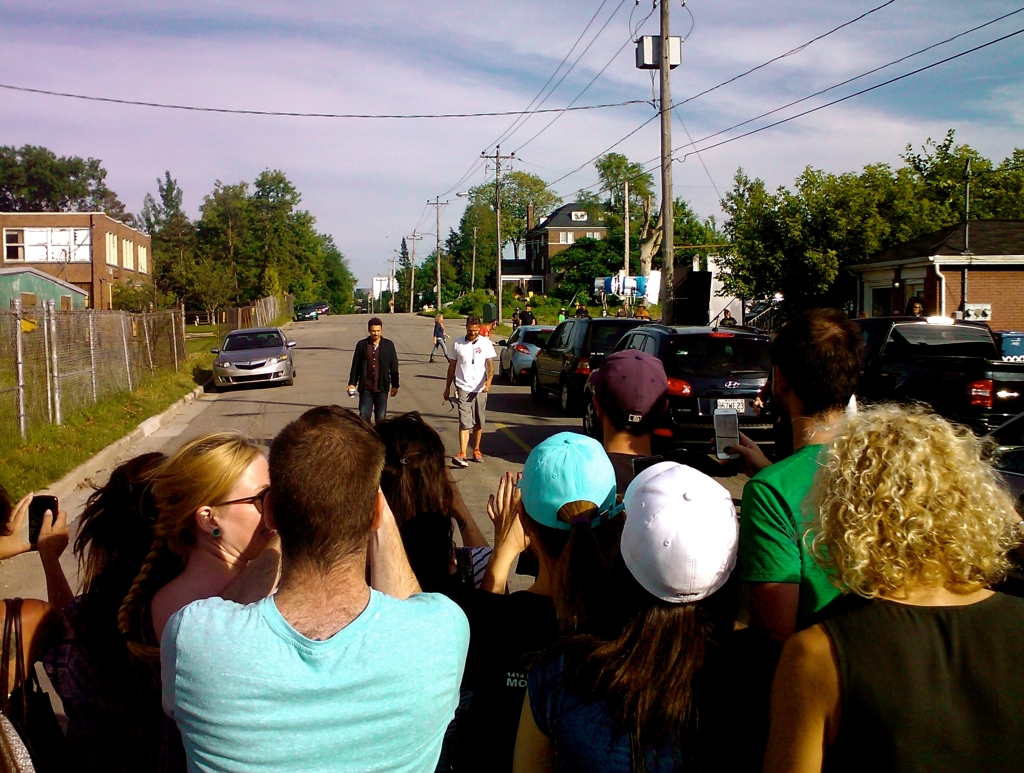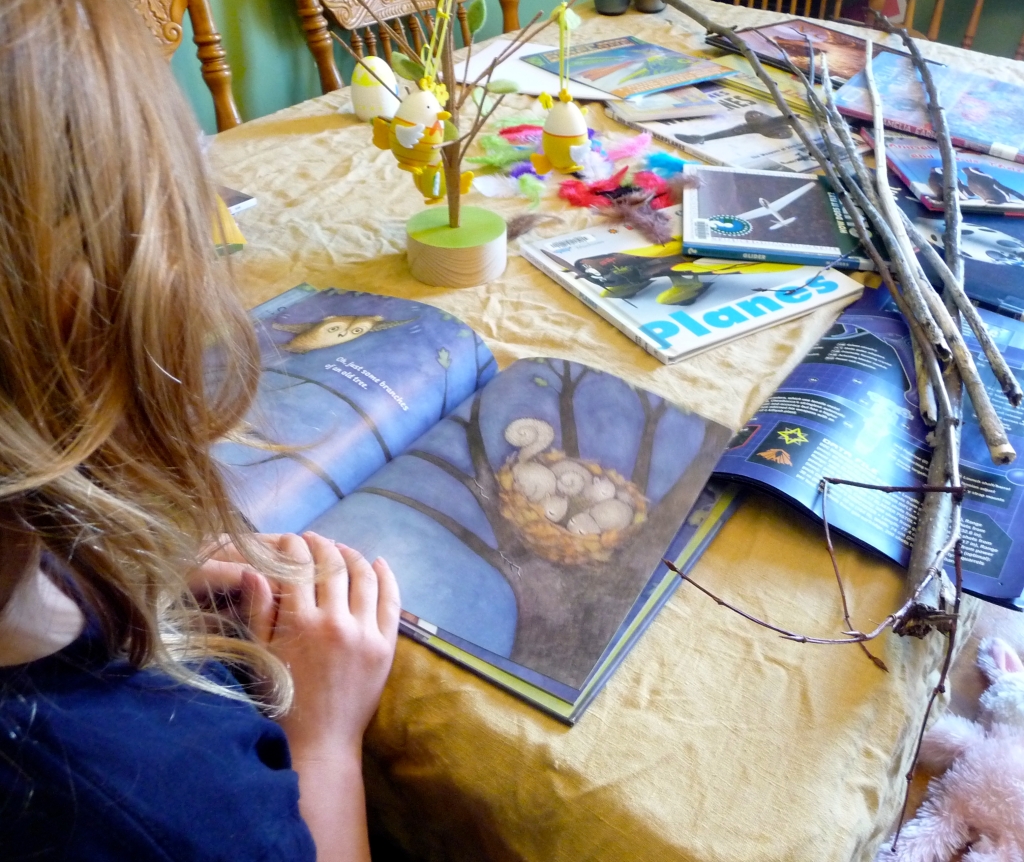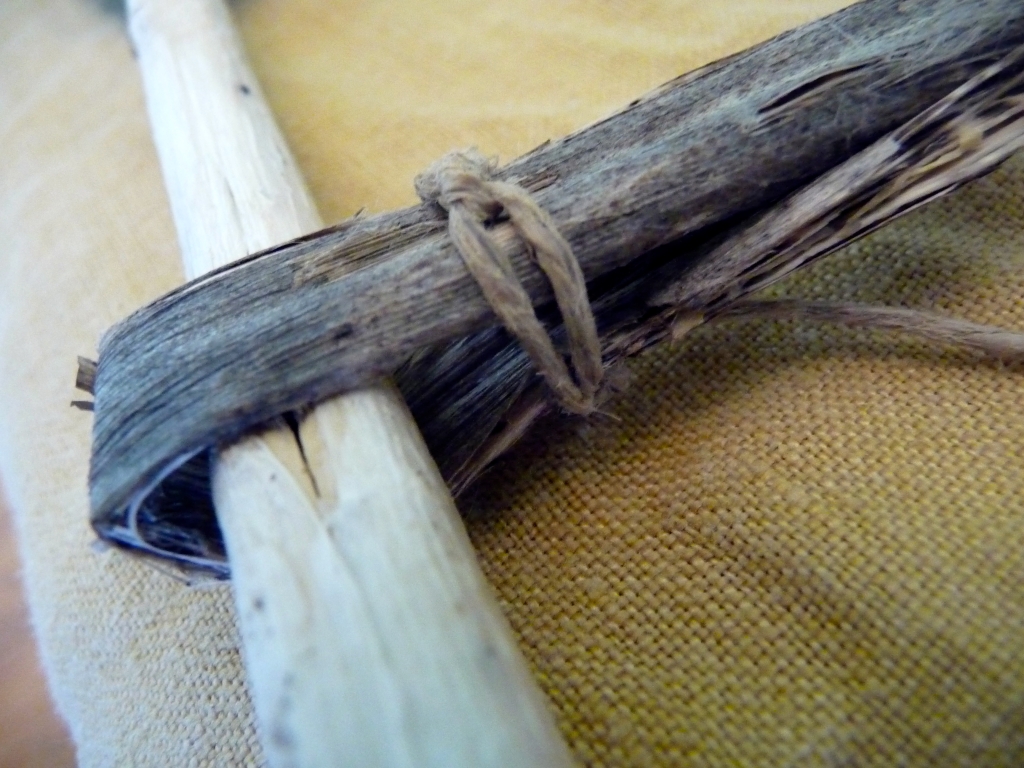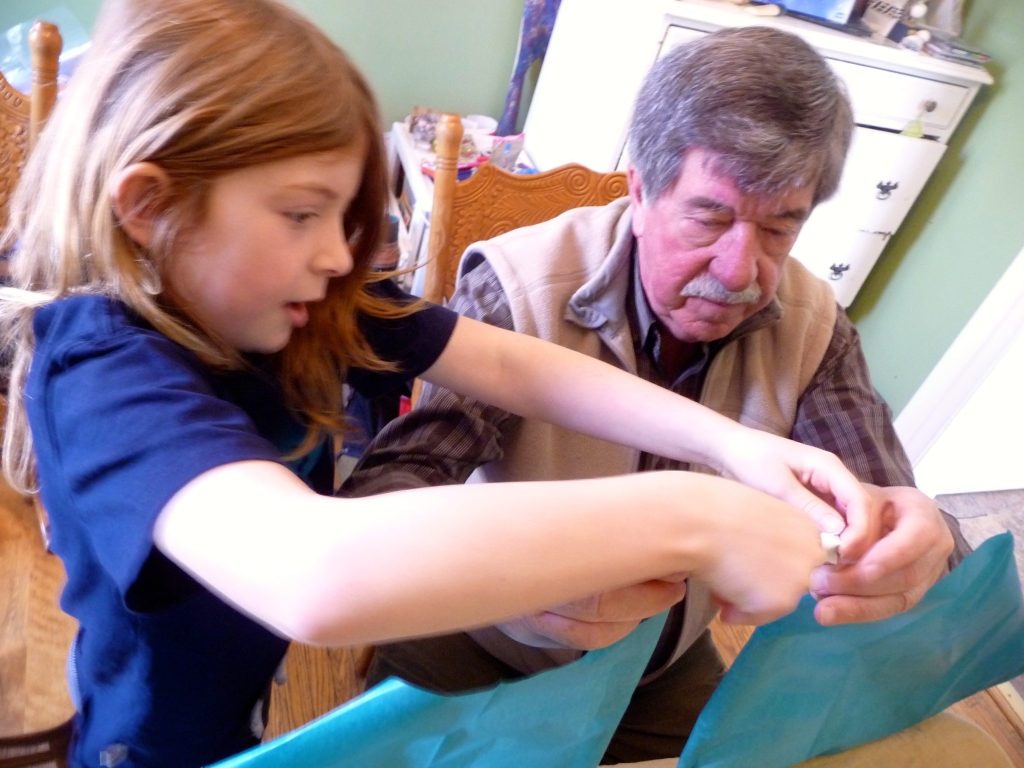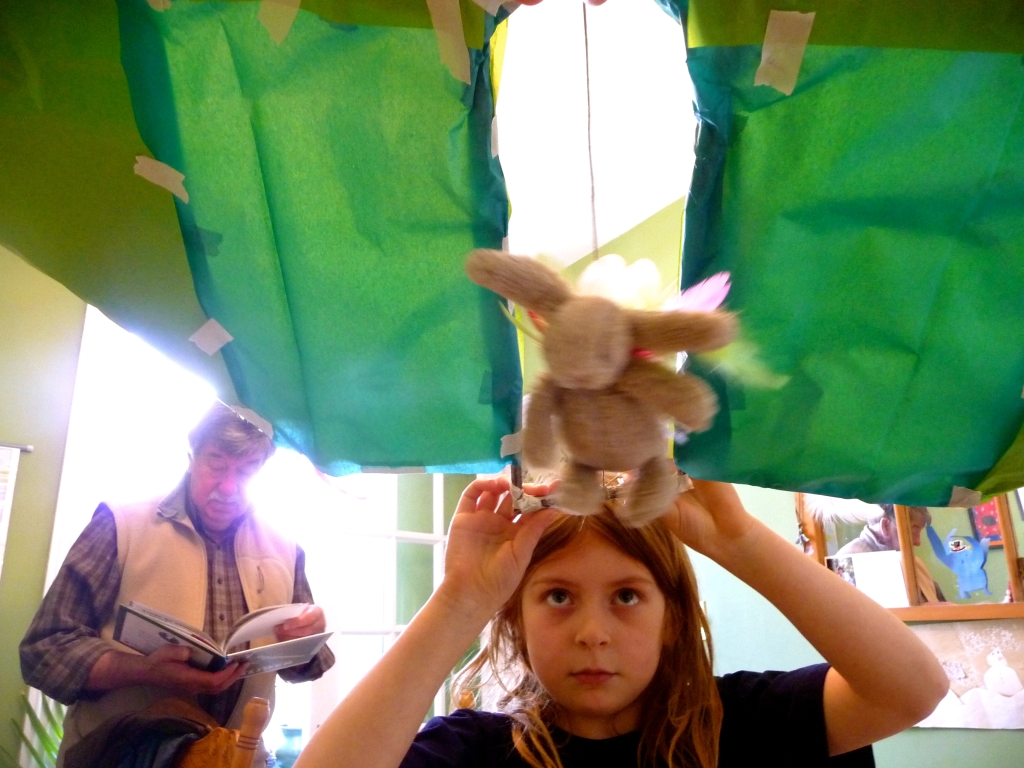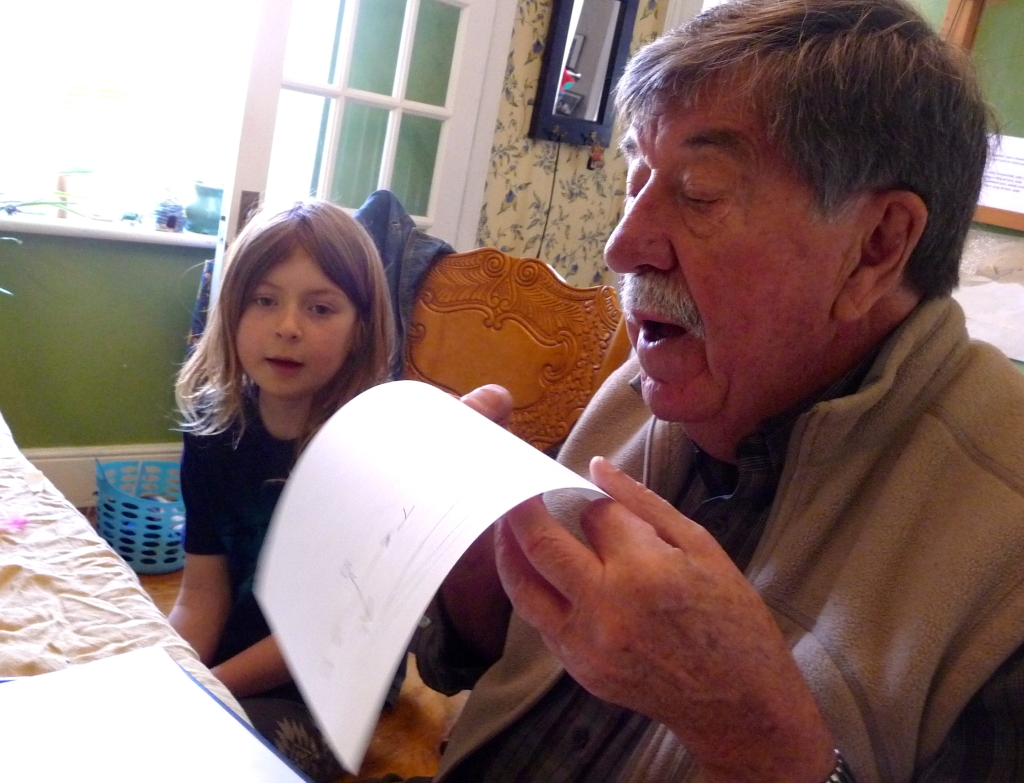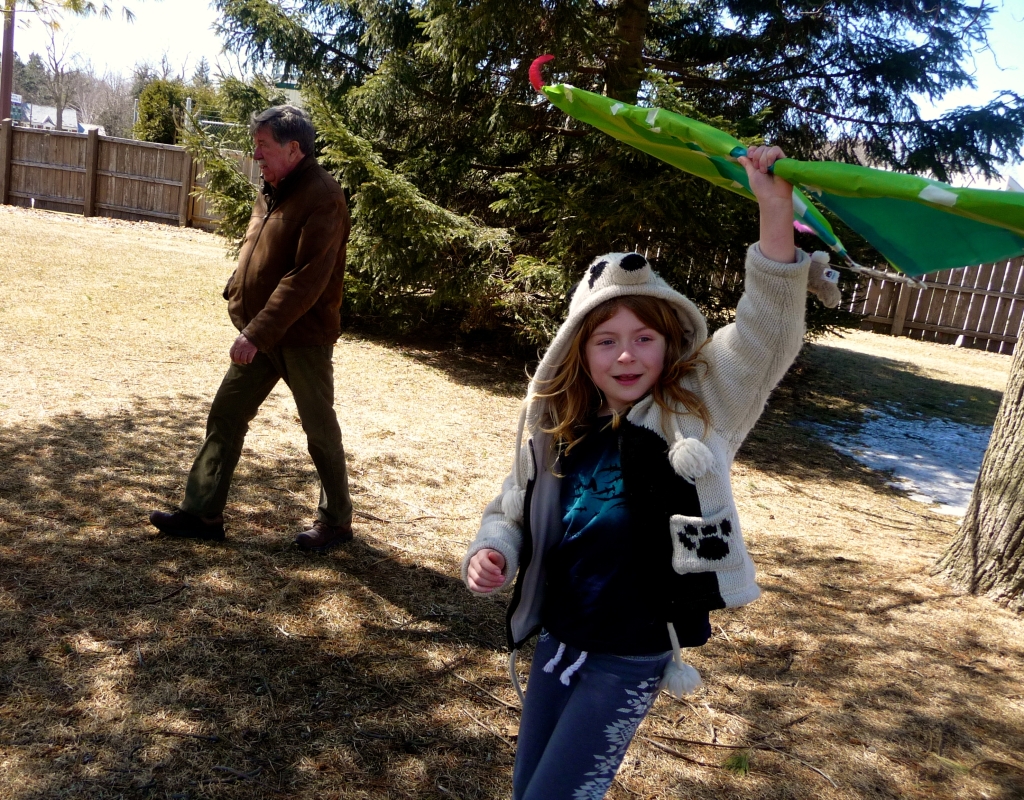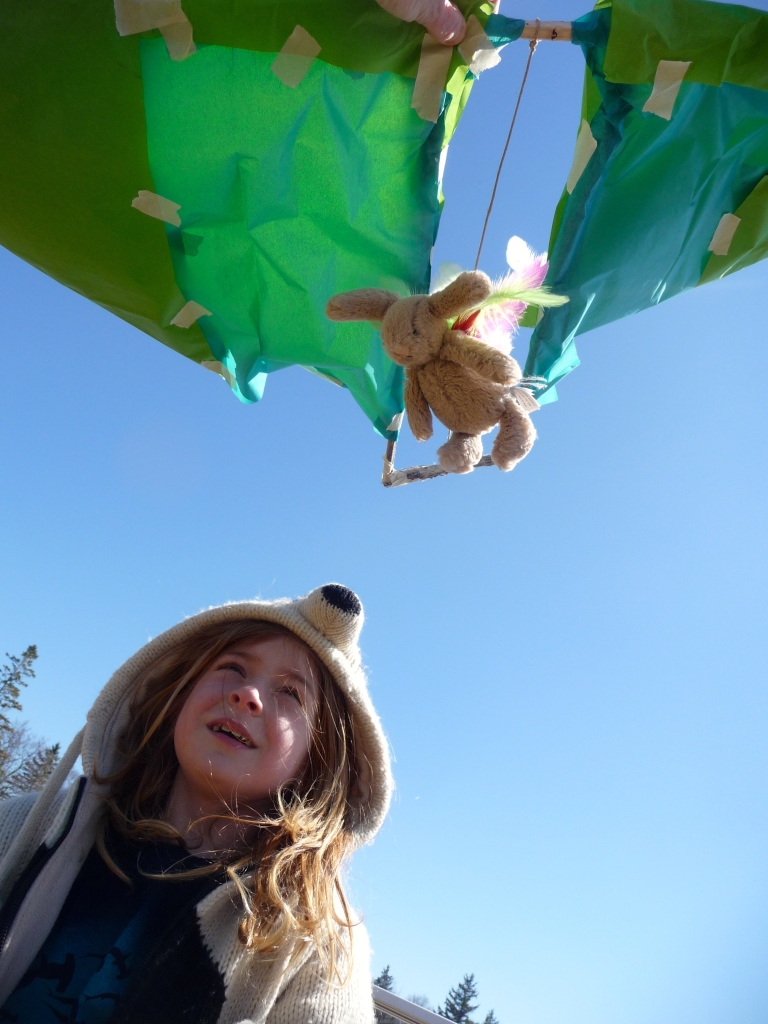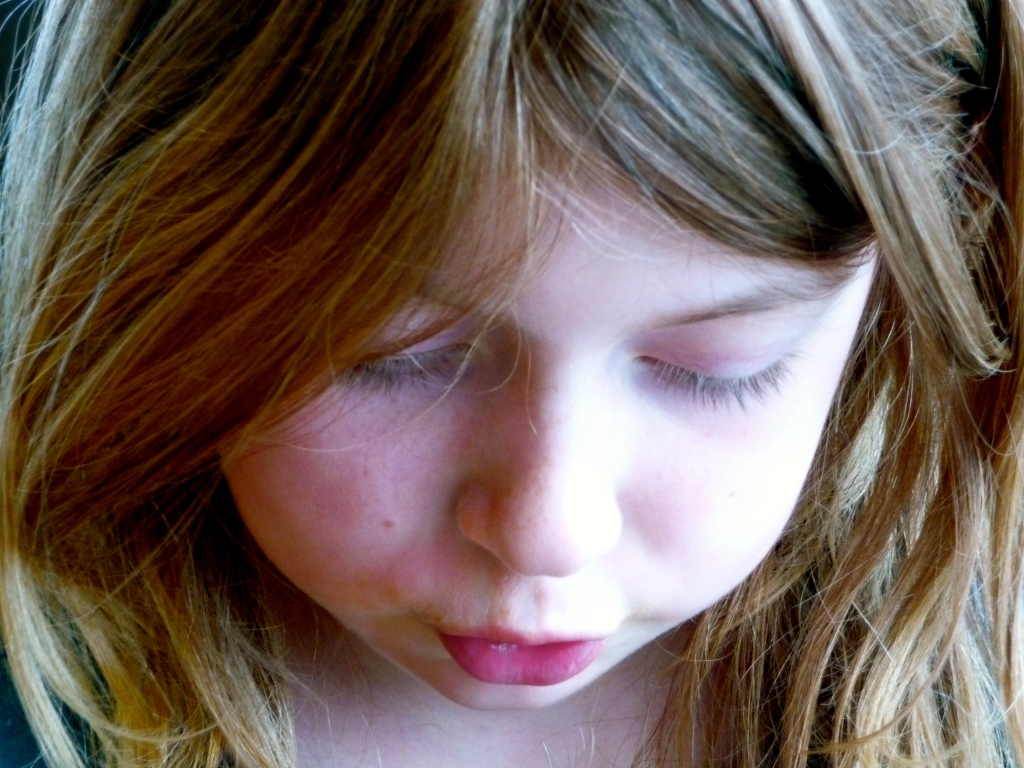CBC Radio Doc “Who Is Allan” airs July 1 and 2. Copy
Who is Allan, a radio documentary I produced for CBC Radio kicked off the summer season a couple years ago on Canada Day. It tells the story of the stories people made up about a man they didn’t understand: Allan, a seemingly educated, sophisticated man who appears homeless, well-known to many in his community of Guelph, Ontario. What’s his real story? And what are all the myths?
“Since fear and social norms often forbid us to ask a stranger questions, people have made up stories to try to understand how Allan came to be. Often great big dramatic stories! In this doc, I seek out those stories, then ask Allen himself for his ‘real’ story.”
Listen here:
And Here’s a little blurb the local paper wrote:
CBC Radio to feature Guelph producer’s documentary on Canada Day
Guelph Mercury
By Mercury staff
GUELPH — A radio documentary by multimedia journalist Dawn Matheson will bring a story about Guelph to people across the country on Canada Day.
The story of a longtime Guelph character known as Allen will kick off CBC’s national Summer Radio Season on Canada Day as part of a new program called The Doc Project.
Matheson’s radio documentary, titled “Who is Allen?,” will air on Canada Day, July 1 at 7:30 p.m. and be repeated Thursday at 9:30 a.m. on CBC Radio One.
Matheson was one of about 20 producers chosen in a countrywide call to create radio documentary for CBC in a ‘boot camp’ held in Toronto over the past winter.
The documentary, featuring dozens of Guelph residents and Allen himself, explores the nature of story creation, Matheson says.
“Allen is a well-known figure on Guelph’s streets for the past 35 years, but most don’t really know him,” she says. “He appears to be a lonely mystery with a long tangled beard and torn clothing happily reading the New York Times at Guelph’s Welcome In drop-in centre, park benches throughout downtown and many cafes.
“Many Guelphites assume he is homeless, or that a tragedy has struck him to put him out on the streets. Others say the very literate Allen is a professor performing an elaborate social experiment. Nonetheless, he has fascinated the townsfolk for years, including me,” Matheson says.
“Since fear and social norms often forbid us to ask a stranger questions, people have made up stories to try to understand how Allen came to be. Often great big dramatic stories! In this doc, I seek out those stories, then ask Allen himself for his ‘real’ story.”
Panel video: HOW TO DRAW A TREE (Trees, Mental Health and Creativity)
Panel Discussion at University of Guelph Arboretum Expo, 2021
With Artist Dawn Matheson, Elder Peter Shuler, Eco-Psychologist Memona Hossain, Horticulturalist Sean Fox, Interpretive Biologist Chris Earley, Tree Planter Mwangi Wa Wairimu, Nature Educator and Podcast Producer Byron Murray and Ignatius Spiritual Director Greg Kennedy SJ.
DREAMING at LAND’S END screening at LUMENS Festival Waterloo: September 25, from 6 to 11 p.m
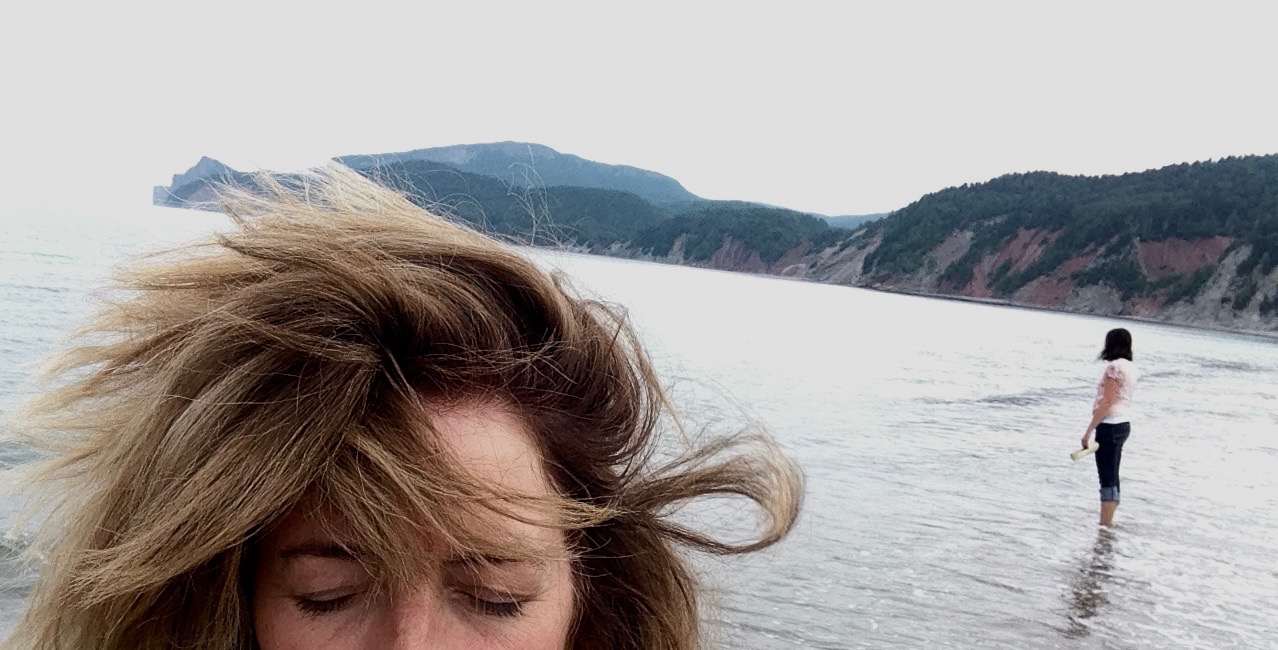
GGGGREAT News !
Films I made while in residence on the ocean in Gaspe, Quebec at the International Institute for Critical Studies in Improvisation summer camp, Musical Improvisation at Land’s End / Coin-du-Banc en folie will be installed in a very cool old barn Uptown Waterloo, across from CITY HALL on William Street.
DETAILS OF LOCATION TO COME!
FREE TO ALL- with many other sound and light projects installed all throughout Waterloo!
Below is the journal I wrote about the process behind this project, whereby I recorded the improvising musicians recounting their dreams to me, immediately upon waking… I then broadcast these dreams back to the group who performed live ‘soundtracks’ to accompany the narratives. I shot the visuals all onsite inspired by the dreams.
No portrait of a creative residency collaborating with musical improvisers felt complete without a deep exploration into the most intimate, untamed, and magical of states —dreamtime.
Dreaming at Land’s End
This is an account of Dawn Matheson’s video project, Dreaming at Land’s End, produced at the 2018 Musical Improvisation at Land’s End / Coin-du-Banc en Folie.
Essay FROM Critical Studies in Improvisation/Études critiques en improvisation, Vol. 13, No. 1
NIGHTTIME:
We are underwater. (Breathing is not a concern). There are two sets of me: one exists on a game board and the other operates the game. One is a princess, the other is an old man. I don’t know who does what or who is in charge. But I do know that we are both lonely.
All of a sudden, we surface on an island, me and myself. There are canapés of food, which is what Ajay calls them in my dream, canapés, though it is really just Tim Horton’s take-out floating on the water. Water all around.
“Tout d’un coup!” Alain yells. “Tout d’un coup!” And we are invaded by an army that I never see, but that I know is there. I am on both sides at once: one of me is valuable and must be hidden; the other is hunting me.
—Oh listener, it is such a long dream, longer than a lifetime. Follow along for a bit, will you? It helps me to tell it to you—
Alain is trying to hide me inside a piano, but the strings and boards are in the way.
It is so crowded in here, yet, somehow, I fit. I can see myself hiding there, but I pretend I don’t.
I crawl through a small wooden chamber out into a succession of interconnected warehouses, each like a film set showcasing a particular period in history. I have to change my clothes for each scene so as to blend in.
I am floating just above the action, out of arm’s reach, just high enough to not be noticed by the unknown people.
—It’s exhausting, listener. It takes such a good deal of flapping—
Oh no, the dream is slipping away. The daylight is coming in. Someone’s alarm is going off in the next room.
The words to the story are vanishing, yet a heaviness of feeling lingers—a sensation of spiders, and a thin trace of a lover who is blind and who once loved me so deeply, so darkly, but whose love has since faded.
I awake with the word thorax on my lips.
DAYTIME:
A lot of dead things were blocking my view while shooting video through Alain Chalifour’s picture window. From the living room looking east, the close-up is all wings and spider legs; the long shot, blue—an evermore blue infinitude pounding the shore, the heave-ho of the Atlantic ocean’s lungs, the soundtrack to all waking and sleeping beings within earshot of this untamed place. To the right are dramatic red-cut cliffs and just around the bend is the ever-anticipated, yet always surprising, eruption of multi-hued limestone called Percé Rock.
Can you picture it, reader? The thousands of stinking nesting northern gannets and thousands of stinking sightseeing humans lumped together at the end of the land in Gaspésie, Quebec—all here to witness something bigger than ourselves: the wonders of life.
Behind me, seated at a long wooden table in the salle à manger of the large, yellow, wooden house, are ten improvising musicians speaking all at once in French, English and Persian (a setar player and his girlfriend have travelled the furthest: from Iran). We eat gruau, the hors d’ouevre to breakfast—oatmeal with bloated raisons and sucre brun—offered each morning with an abundance of exuberance. Deana Chalifour, Alain’s wife, is in the kitchen cooking the eggs, the quiche, the pancakes, the more involved cuisine, all the while hollering at Alain, who has, yet again, gotten behind in his serving duties due to too much exuberance.
We, of linguistic, gender and cultural differences, of diverse skills and assorted experiences, are together for eight days and seven nights to listen to each other’s stories and sounds, to respond with our own stories and sounds, and to test out the claim that musical improvisation—a language not spoken—can serve as a model for political, ethical, and cultural cooperation.
I am not a musician, but I am also here to improvise, and my craft is video.
Ajay Heble, the director of the International Institute for Critical Studies in Improvisation (IICSI) and Alain Chalifour, camp co-organizer and the owner of one of the few houses here in Coin-du-Banc, Québec (where there isn’t a Tim Horton’s for over 50 kilometers), had originally invited me to document the numerous activities and public performances of this, the third annual bilingual improvised music camp entitled Musical Improvisation at Land’s End / Coin-du-Banc en folie. I accepted, but added a twist.
The last two camps had already been so well-documented, resulting in hundreds of hours of digital content stored at the IICSI head offices at the University of Guelph. From this footage, two beautiful films were produced. Reader, you must see filmmaker/researcher Kimber Sider’s comprehensive and attentive documentary and Brazilian filmmaker João França’s enchanting meditation, Why I’m Here / Pouquoi je suis ici.
Kimber’s video elucidates the intensity of connections made (musically and socially) among camp participants, visiting artists, researchers, hosts, even locals—substantiating the claim that improvisation really does build community, even between strangers. João’s piece. . . well, reader, in watching it, you will feel the Gaspésie’s magical je ne sais quoi deep in your body and embrace the transformative spirit of the camp within your heart. Both films have been rightfully fêted at festivals.
I couldn’t compete with that. I wanted to do something different—to propose a video project that hadn’t yet been considered, but that also provided some insight into improvisation and community-making. And I, too, wanted to attend camp as an improvising artist rather than as a documentary filmmaker, which had been my role in the past at IICSI. I craved to be free from any expected structure and self-consciousness—self-imposed or otherwise—and to use my intuition and imagination as the driving inspiration while still portraying something authentic. And so, I proposed to explore the unexplored—the other highly creative half of the time we all spent at Coin-du-Banc: dreamtime.
As I understand it, the practice of improvisation requires deep listening, which involves the suspension of conscious control and the heightening of the senses. This, in turn, enables freer, more spontaneous thoughts and actions, which uncover new connections and previously unrealized associations. At times, improvisation feels so extemporaneous that it seems to come from somewhere else altogether—but in actuality, it comes from deep inside of us. Improvisation, as it turns out, is much like dreaming.
What is going on in the unconscious or semi-conscious minds of the participating improvisers while sleeping? Nobel Prize-winning neuroscientist Eric Kandel states that, “human creativity. . . stems from access to underlying, unconscious forces” (The Age of Insight). How, then, are dreams affecting the participants’ creative output during the workshops, and how are these waking experiences and sense of place affecting their dreams?
Throughout history, artists have frequently turned to dreams as a source of inspiration, a retreat from reason, and a space for exploring imagination and desire. Musicians, from Beethoven to the Beatles, have attributed their dreaming minds as the rightful composers of their music. Philip Glass once claimed he rushed to write his dreams down immediately upon rising, then spent the entire day trying to compose work that brought them into waking life (Fulker).
“Slumber with a key” is how Salvador Dali described his conscious use of the unconscious as inspiration for his work, unknowingly activating what neurologists call the hypnogogic nap: the process through which the mind unlocks free-flowing creative thoughts (Carr).
In my own life and artistic practice, dreams have increasingly become a source of wonder and inspiration—so much so that they have stared out-wowing my waking life (reader, I can fly in my dreams!). I wanted to spend more time exploring this state in the body and in the mind, and search out how it relates to creative practice and improvisation. I wanted to find a way to lure the stories of the night out into the light of day and make art out of them, or at least give them a larger role in my creative work.
So, it seemed Musical Improvisation at Land’s End would be the perfect occasion to birth this project, with the perfect group of people with whom to collaborate: improvising strangers living together, taking creative chances in an enchanting place “where the land ends, [and] imagination begins” (as the camp slogan states).
Besides, everyone dreams (even if some claim to not remember their dreams). It is a universal human experience—a way for us all to come together despite our differences, something we can all share, which is exactly the common component I seek in all of my collaborative projects, especially when working with diverse participants. I believe that by creating and imagining together, and by sharing personal pursuits of meaning, we can combat isolation and loneliness, open minds, change perceptions, and break stigmas and stereotypes. Plus, what an icebreaker for a group of strangers. “Tell me your dream” surely beats the standard circle opener, “tell me what you had for breakfast.”
The further I researched the intersection between dreaming and improvisation, the more evidence I found to support the connection. Director Ajay Heble describes his earliest aspirations for creating such a camp as a long-time personal dream, and a young camp participant in the first year stated that she must have visited the camp in a dream: “I knew I’d been here before, even though I’ve never even been here or even heard about it until, like, two months ago.”
When I learned that dreams were an integral part of improviser and IICSI sage Pauline Oliveros’s work—who also collaborated on an annual Dream Festival with her life and artistic partner, IONE—it began to feel as though no portrait of the week would be complete without an interrogation into the dreaming life of camp participants. It felt necessary for the sharing of dreams to play a role in the daytime programming.
So, Alain and Ajay, together with the guest improvising leaders Marianne Trudel and René Lussier, took a chance on my proposal, Dreaming at Land’s End.
NIGHTTIME:
I’m trying to remember now, listener. Hmmm.
There was an exam. It was on the spider. We had to identify the anatomy of the spider. All I had was the thorax down.
Then, in the kitchen where I lived, was—oh my goodness, that’s right, a lover. Oh gosh. There was a lover. A person who was blind was my lover.
I was trying to clean out the cobwebs in the plant pots so I could plant new trees.
Inside I spotted what I thought was a mouse, but it was identified as a miniature hedgehog by some unseen dream divinity. The thing had the face of my own dog, which made me miss my dog so much.
I was showing the hedgehog to my new blind lover, showing him the face of my dog, but he couldn’t see it.
FIRST NIGHT:
I arrived in Coin-du-Banc a night before all the others arrived, walking in on a Chalifour family feast: kids, grandparents, French singsong, laughter, hollering, seafood, wine. I became family in under five minutes.
I was seated next to Alain’s son-in-law who works as a physician-radiologist and runs several private MRI clinics in Montreal. I told him about my dreaming project.
To avoid any potential airy-fairy or artsy-fartsy assumptions from a man of science, I told him about the study conducted by Charles Limb, a surgeon and research scientist at the University of California, who is also a jazz saxophonist (“Neural Substrates”). Intrigued by the genius of John Coltrane, Limb put jazz musicians into MRI machines to see what happens in their brain as they improvise live, and, with his colleague, AK Braun, he designed a miniature electronic keyboard that could be balanced on the knees and played while in the tube.
My dining mate was not surprised by the results—when someone is improvising, parts of the brain associated with self-expression are highly active. He concurred that, when creating something new, there would be a widespread activation of neocortical sensorimotor areas.
Limb states that, when improvising, another part of the brain (associated with inhibition) quiets down: “so that you’re not inhibited, so that you’re willing to make mistakes, so that you’re not constantly shutting down all of these new generative impulses” (“Your Brain On Improv”).
Alain’s radiologist son-in-law thought this was wild.
The clincher was that Limb’s colleague Braun—himself a neurologist who has studied brain patterns during sleep—recognized an uncanny similarity between the brains of improvisers and the brains of people dreaming during REM sleep. Both states occur when the brain is at its creative peak and produce remarkably similar brain activity.
As stated by Braun: “It’s tantalizing to think some connection exists between improvisation and dreaming, which are both spontaneous events. These musicians may in fact be in a waking dream.” (Zagorski).
DAYTIME:
On Day Two, I was slotted into an already packed schedule in order to introduce myself and my project to the improvisers. I had to win them over, gain trust, and encourage these strangers to take a chance with me. The first thing I did was play a dream that I had dreamt the previous night. I should note that in all of my projects, what I ask of collaborators, I also ask of myself. This often involves being somewhat vulnerable. Of course, we are both free to say no.
For two decades I have worked as a multidisciplinary artist collaborating with community partners by looking for creative ways to come together. My work has been defined as social practice art—simply put, it is about relationships. I’ve co-created with seniors, street-involved youth, adult literacy students, new immigrants, strangers, d/Deaf people, people with various types of disabilities (both physical and psychiatric), and lots of musicians, from children in music programs to youth string players to professional musicians.
I rarely pitch a project with an idea fully formed. How could I? I have to spend time with the collaborators and allow them to get to know me. I build intimacy with them and then—most importantly—I listen deeply and pay close attention to what’s happening so that, together, we can discover where the magic and possibilities lie. Really, it is a lot like improvisation—through being intensely present and remaining open and attentive with my co-creators. All of this necessary back and forth is vital before a clear direction can be established.
Together, we’ve shared our art in alleyways, public fountains, front lawns, trees, men’s bathhouses, balconies, city halls, and (more conventionally) on CBC Radio, in cinemas, and at the Stratford Festival, Ed Video Media Arts Centre, the Art Gallery of Guelph, Nuit Blanche (both the Toronto and Guelph editions), Hot Docs Cinema, Summerworks Theatre Festival, CAFKA Kitchener, and more.
A good part of my work has been supported or contracted by IICSI. For this institute, I have recorded concerts, conducted interviews, and produced a full series of community collaborative videos on Jane Bunnett and her interventions with local Guelph community partners as part of the Improviser-in Residence Program at the University of Guelph. On the academic side, I’ve been a research project manager exploring the ways that marginalized and misrepresented communities can use the arts to advance social inclusion and justice by challenging stereotypes.
For Dreaming at Land’s End, with the diverse group of musicians seated in front of me in Alain’s living room, I proposed the following programming:
- WAKING THE DREAM: I will audio record participants retelling their dreams immediately upon waking by: a) providing dreamers with access to a digital recorder overnight; b) being available in my room at all hours of the night for dream recitation, and; c) conducting interviews to draw out dreams from participants upon waking.
- PUBLIC NAP TIME: I will hold an afternoon nap time for all participants to sleep and dream together on two occasions on the beach. I will then record any dreams dreamt during this potentially hypnogogic period of dreaming.
- SOUNDING THE DREAM: I will hold group sessions broadcasting recorded audio dreams to the group. Improvisers, with direction from the dreamer and as inspired by the dream telling, will imagine and improvise a soundtrack to accompany the dream.
- I will collect visuals from the immediate environment during the week at camp to be used in post-production along with the recorded dreams and improvised soundtracks.
- From the above material, I will produce a series of experimental dream videos.
Well, reader: they agreed to participate!
NIGHTTIME:
We are all 19 years old—don’t worry, listener, this is a short one—we are 19 and are permitted to enter a small box to be coupled with our first mate. I was coupled with the wrong person. It was the wrong mate in the box.
It is obvious that I have to get away.
My destination is so far and it is getting dark and I am scared that I’ll never arrive.
I know that the meeting place is at the second Tim Horton’s where my mother is waiting.
She is very small and weak and I’m greatly concerned for her but I just want to be 19 and not think about it.
I am back and forth on the beach as if in a relay race. We are all in a row, stuck in a back-and-forth race that we can’t escape.
Now I can see that we are the tide: the in and out, in and out of the tide.
DAYTIME:
Zoé, a local Québécoise singer, 19, was the first to share a dream. She came to me at breakfast on the morning of Day Three with three sleepy whisperings, recorded on her iPhone: one involving a voice teacher instructing a “queer” style of music; another, a meeting with the first boy she ever kissed; and a third, crossing a bridge full of holes with Reza, led by René, both of whom she just met the day before here at camp. She described her dreams as all “making sense and not making sense.” They were beautiful.
“Did you dream?” became the morning greeting as one by one, the improvisers came forward with their nighttime revelry, even those who said they never dream, or at least didn’t remember their dreams. They were the ones who worked the hardest for the project. Shelir, Reza’s girlfriend (both from Iran), even had a dream where she approached a group of children begging them to please tell her their dreams so that she could have a dream to share with the group. The dream children provided her with one. Though not participating in the camp herself, Shelir, an engineering professor, wanted to be a part of the improvising, too. Her dream—its telling and sounding—ended up being performed live at the camp’s final public concert at the tiny church (now a museum) across the highway, between Alain’s home and the forested hinterland.
Some dreamers shared dreams that lasted but a second: a drive-by utility pole sighting; an ocean wave that rolled up like a rug; and a store filled with living, moulded string instruments. Others, who we called “super-dreamers,” described long epic dreams: disembodied cats scattered on beaches; stranded on Bonaventure Island with the screaming gannets after the last boat set float; smoking a cigar at a jazz party looking cool so as to fit in (dreamt by 18-year-old Ben, a young student-musician from Wakefield who smoked his first cigar in this dream).
Some dreamed about each other, which inevitably altered their waking relationship in ways that caused both bonding and discomfort. Intimacy was created in the sharing of private stories, but vulnerability also surfaced when confessing to dreaming about each other. Reza, who had never experienced such musical freedom in a lifetime of performing and teaching setar and tar in his own country, confessed to confusing his waking and dream states here in the Gaspésie—was it all a dream, he wondered? When was he awake? When was he asleep? (He also willingly provided me with a soundtrack of snoring, recorded by his tent-mate Shelir).
Midway through the camp we held a Pubic Naptime. Anyone interested—participants, hosts and beachcombers—were welcome to have a collective nap at midday on the beach. The only instructions were to lie down together and close our eyes. The rest was to be improvised. Reza recited a long Persian bedtime story as the waves smashed, then slinked off, at our feet, providing a heartbeat. Some slept, some listened, and some dreamt as wandering beachcombers looked on.
On Days Three and Six, our group Sounded the Dreams. I played back the audio recordings, the dreamers further elaborated on the dreams, then improvisers interpreted and improvised a soundtrack. The engagement was palpable and the music moving. It seemed as though sharing imagery or wisps of narrative, however bizarre the tales, created a form for creative exploration that was a potent bonding experience.
During one of the dream improvising sessions, Marrianne Trudel responded: “As soon as we have a story, it changes everything. A shared vision. . . just to have something to jump off from and improvise.” Purposefully including the improvisers’ unconscious or subconscious lives into the conscious programming at camp worked in remarkable ways, enhancing the opportunities for understanding, for co-creation, and for improvisation.
The communal process was an act of generosity. “I will tell you my dream” was the invitation and “I will perform your dream” was the gift.
AFTERMATH:
Seven videos follow this text imparting nine dreams. Each film is made solely from the stories and sounds (including environmental sounds, concerts, improvised sessions and experimental sound workshops with musician Robin Servant), as well as pictures taken during the seven nights and eight days at camp.
There are many more films that could be produced from this raw material (eighteen dreams were recorded), including endless interpretations of each dream. None of these videos are meant to be an accurate representation of the dreaming world, as dreams are never meant to live fully in the light of day, nor could they. Dreams are mysterious hints at our common creative impulses and improvised inner worlds that don’t always have to be understood and explained away—just felt. As this project captures, for the 2018 edition of the camp in Gaspésie, dreaming life became just as integral to the camp’s programming as waking time, adding new creative realms for exploration, improvisation and connection.
HOW TO DRAW A TREE radio show!
This lovely smart sneaky guy Byron Murray interviewed me (by surprise- I thought I was interviewing him) for his REALLY GREAT radio show- “to know the land.” We spoke aaaaallllll about my big multi-year project at the UG Arboretum/funded by Canada Council for the Arts that is a bit ‘out there’ – all on trees, mental health and love: HOW TO DRAW A TREE. This guy is such a good listener- he drew it out of me and I think the description of the work comes across pretty well! Please have a listen and tell me what you think! https://www.toknowtheland.com/podcast/ep162
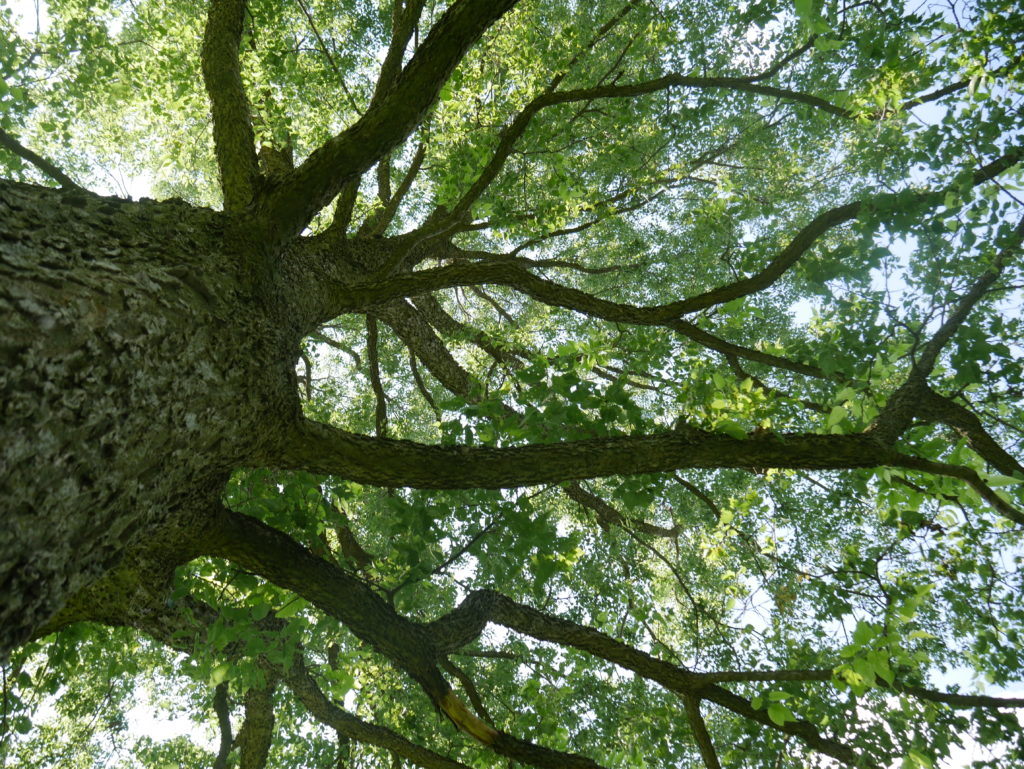
How To Draw A Tree (Trees, Mental Health, Creativity)
I usually collaborate with humans for all of my public art projects. That doesn’t work during COVID, so luckily I have another big group of friends who save my life on the daily: trees.
I am building a project connecting trees with mental health and creativity which will result in a SOUND WALK up at the beautiful Arboretum at University of Guelph in 2022. We are matchmaking trees and humans for lifelong reciprocal friendships. After all, we are both in crisis- mental illness crisis and climate crisis. We can help each other.
Thanks to the Canada Council for the Arts (Research), and The Ontario Arts Council (Media Production), the many collaborators on this team and the Arboretum’s smart staff for partnering with me.
To learn more about this project HOW TO DRAW A TREE: have a listen to the lovely and smart Byron Murray who interviewed me (by surprise- I thought I was interviewing him) for his REALLY GREAT radio show “to know the land.”
https://www.toknowtheland.com/podcast/ep162
Join the HOW TO DRAW A TREE Facebook Page: https://www.facebook.com/groups/1653230351544041
PUBLIC TALKS:
Saturday, Sept. 11, 11AM – Noon
Myself and the very diverse TREE team (arborists, eco-psychologist, Jesuit, Indigenous elder, tree planter, medical psychotherapist, eco-acoustic artist.. ) will be talking about this project- the process so far and the larger community engagement we are developing. PLEASE COME!
https://arboretum.uoguelph.ca/educationandevents/plantsale
FREE at the Arboretum, UNIVERSITY OF GUELPH.
I will also be screening a couple of films the same weekend at the Arboretum… from another engagement project A SENSE OF WONDER, with a troupe of Deaf youth … lots to see! Hope to see you there. http://www.thiswasnow.com/a-sense-of-wonder-exhibition-opening-invite-jan-19/
A fun little side project to HOW TO DRAW A TREE- this one is for kids:
OLD LUMPY- THE TREE WITH THE ANSWERING MACHINE at EXHIBITION PARK.
I am also doing a bunch of other mini tree-human engagement projects. Like this fun little one called OLD LUMPY about a old tree with an answering machine… Thanks to Dr Doug Larson for educating us!
click here to watch the VIDEO: OLD LUMPY
and HERE to listen to some of the messages! (UPLOAD Mp3 file)
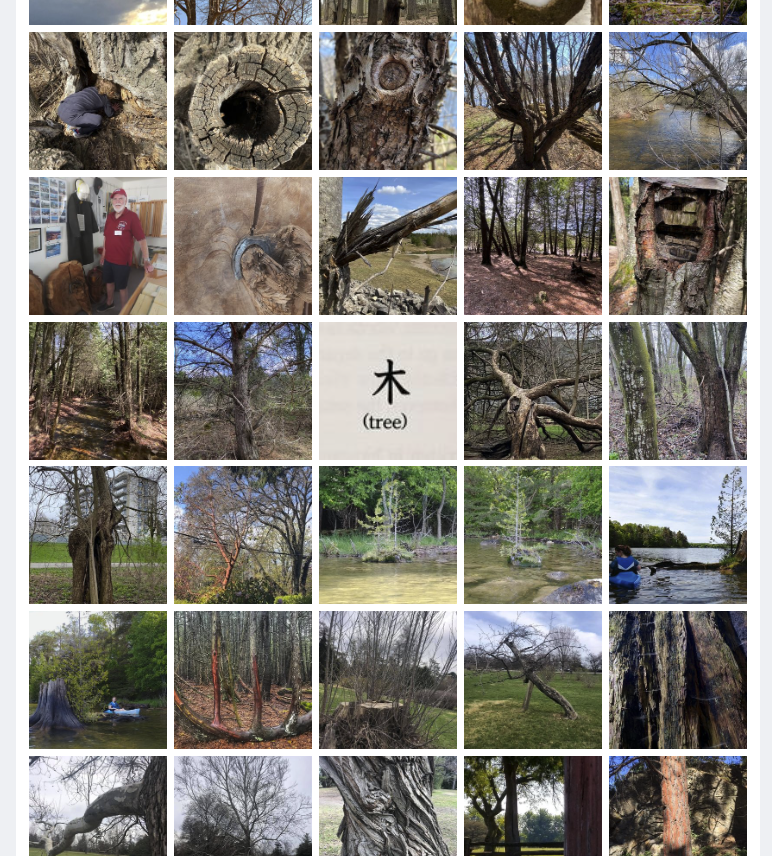
VIDEO LAUNCH: Dreaming at Land’s End
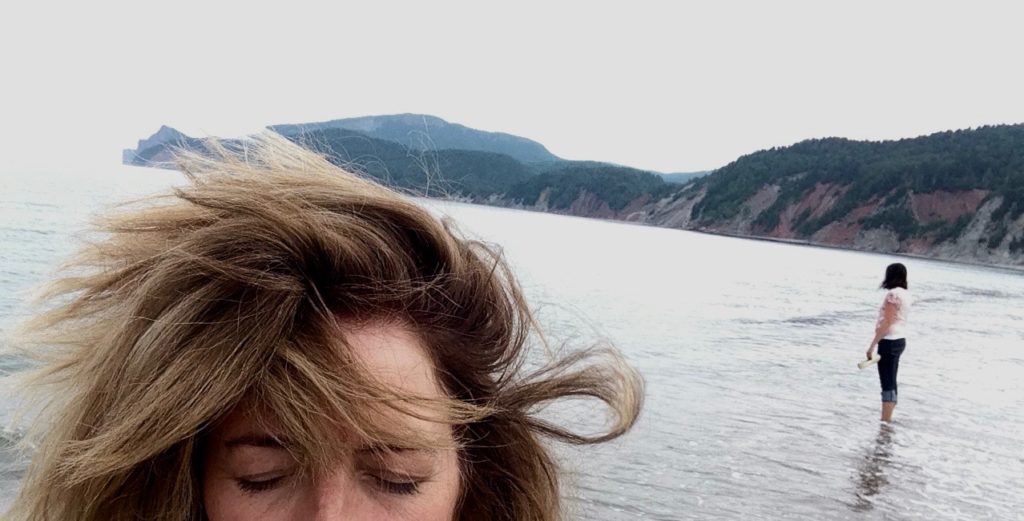
On May 31, 2020, “Dreaming at Land’s End,” a new experimental video series by interdisciplinary artist Dawn Matheson, is launching on the University of Guelph’s International Institute for Improvisation’s online journal: “Critical Studies in Improvisation/Études critique en improvisation”
criticalimprov.com
The release of the seven-video compilation is accompanied by a creative text by Matheson exploring her daytime and dreamtime video residency at the Musical Improvisation at Land’s End / Coin-du-Banc en folie camp on the Gaspe Coast in 2018.
Matheson recorded the dreams dreamt by participating musicians while at camp, then had the musicians improvise a live soundtrack to accompany the dream narrative while she provided the visuals.
“No portrait of a creative residency collaborating with musical improvisers felt complete without a deep exploration into the most intimate, untamed, and magical of states —dreamtime.”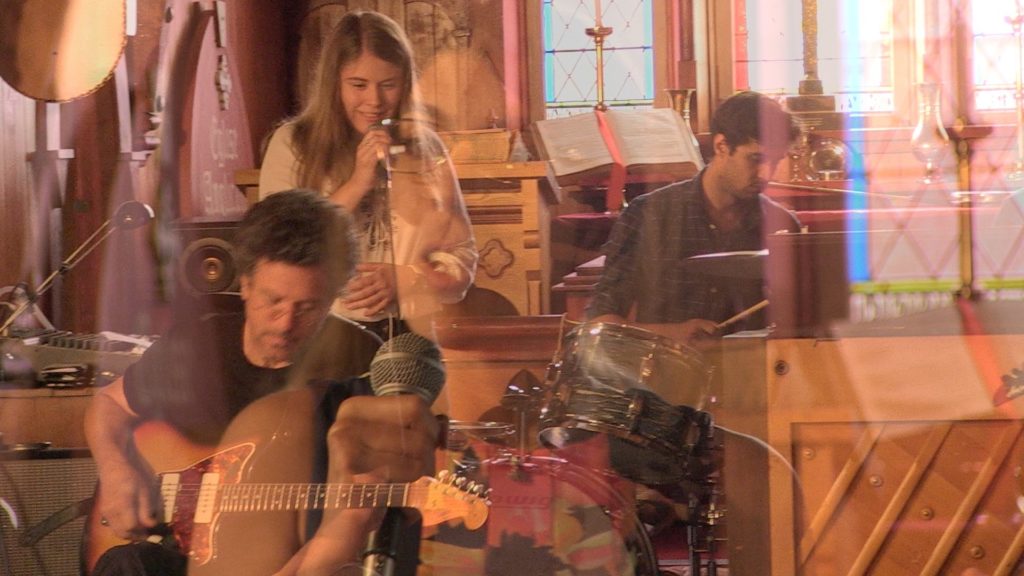
CBC Radio Doc : The Other Side of the Glass
Someone was stabbed outside the bookstore window when I was working there years ago at Queen and Sherborne.
This was the first radio doc I ever made, and WOOOOH, was it a ride. Funny to listen to it now. CBC Radio OUT FRONT (which I went on to work for as Associate Producer, a couple of years later) wanted the teller of the story to be very present in the piece. I like the other voices SO much, I wish mine wasn’t so ‘present’. What amazing strangers I met wandering Queen Street while working at the bookstore. My greatest mentor to date, Steve Wadhmans, radio doc producer extraordinaire, held my hand for the editing process and taught me all about sound pictures and scenes. Greatest sound storyteller ever… from CBC, now retired and singing tenor in Victoria, BC.
Listen here:
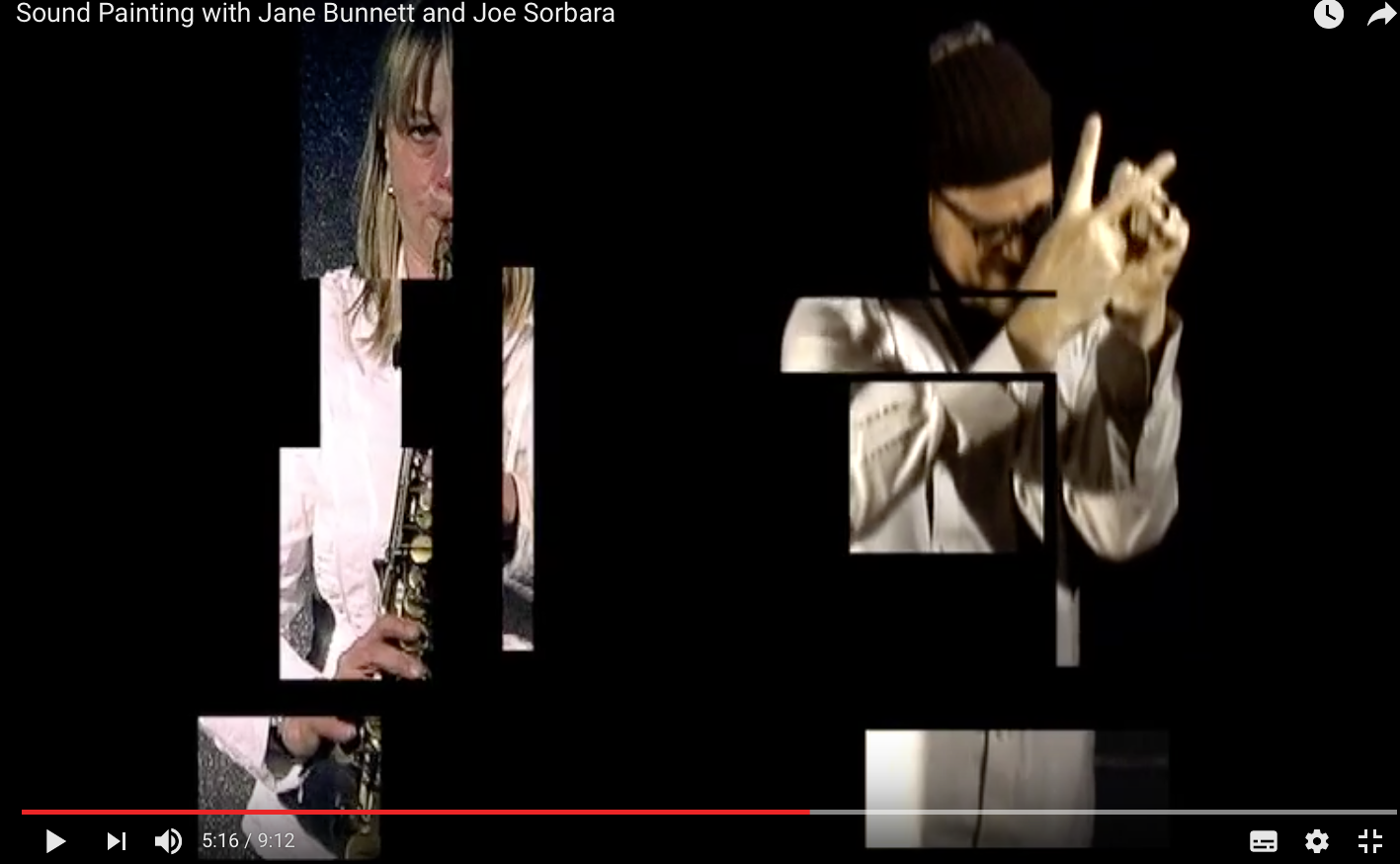
Sound Painting with Jane Bunnett and Joe Sorbara
This video is a test for improvisor Jane Bunnett. I watched Joe Sorbara conduct a band of university Jazz music students using these full body gestures. He said it was a technique developed by Walter Thompson– Jane, famed improvisor who happened to be Improvisor In Residence at University of Guelph where he teaches, had never heard of it.. So she gave it a try for the first time and let me tape it. Watch this gestural conducting embodied through Joe’s hands and body and see how Jane reasons with noise. Dancing hands and sound. Editing: Nick Loess.
Watch it here.
More with Jane and Kids Ability? See KATY’s SONG
2-way: Childrens’ and Seniors’ Conversations (Radio program)
2-way: Children and Seniors’ Conversations is where Guelph kids, Grades 4-6 from Wellington Hall Academy, talk with Seniors from Riverside Glen Retirement Home about life, getting killed, dating, KFC, firecrackers, school, the best colours, best friends, lost friends, regrets and the afterlife.
The show is produced by Dawn Matheson.
The PROMO launch is WEDNESDAY June 7 at 3pm for 30 minutes…
Listen to it here:
then the full interviews run Thursdays at 2pm starting June 8 on CFRU.ca 93.3 in GUELPH for THREE consecutive Thursdays. I”ll archive them here as well, after they air.
I produced this program with the kids who learned how to interview (though, their candid questions were already tops), audio record and some even editing. Great recording help from Jenny Mitchell and her Mobile Studio, Andrea Pateveri, and Kim Logue from CFRU Radio. Thanks to Mrs Huntley and Steven Huntley from Wellington Hall, and Meghan Connelly from Riverside Glen!
Look at these darlings:
A Sense of Wonder Films at Toronto International Deaf Film and Arts Festival
“A SENSE OF WONDER”
A Sense of Wonder is a collaborative project that seeks to cultivate creative, inclusive, and imaginative processes, which connect with and express d/Deaf culture through the convergence of art and social practice.
A Sense of Wonder is led by Guelph-based interdisciplinary artist Dawn Matheson in collaboration with d/Deaf and hard of hearing kids and youth from across Southern Ontario. In Wonder, the kids are the boss.
Commissioned by the Art Gallery of Guelph and supported by Ed Video Media Arts Centre, Wonder engages multimedia, performance, and video to provide access and insight into d/Deaf arts in an exploration of the presence of deafness over the absence of sound.
Fresh off, a stellar exhibit last year at Art Gallery of Guelph and a Downtown Guelph projection. A Sense of Wonder Videos were also screened at Toronto’s Hot Doc’s Cinema for the Toronto International Deaf Film and Arts Festival!! WOWZA. WHAT an honour!
Toronto International Deaf Film and Arts Festival
2018 will see one of the films featured in KW’s CAFKA art festival! Projected on Kitchener City Hall’s Cube!
Dawn Matheson is now working at EC Drury School for the Deaf’s Grade 11 and 12 media studies class coming up with new works for YEAR TWO. Thanks to Ontario Arts Council Artist in Education Grant!
4 films in total were created as part of YEAR ONE of Dawn Matheson’s A Sense of Wonder collaboration with d/Deaf youth throughout Ontario.
-We’ve run around in the forest with GO PRO cameras making movies at The Guelph Outdoor School (IF A TREE FALLS)
-We’ve felt music wearing vibration vests: put our heads in tubas, hugged double basses in FEELS LIKE MUSIC (You will experience the vibration vests at the exhibition!)
Video Teaser: https://www.youtube.com/watch?v=o-SUssd6WXI&feature=youtu.be
-The Grade 6,7,8 Deaf Plus class from Drury School teaches ASL in ALL TOGETHER NOW
-And a 9-year-old Guelph girl performs an ASL interpretation of e.e. cummings’ stunning poem [i carry your heart with me (i carry it in] in an outdoor projection downtown
My first CBC Radio Doc
I produced this radio doc on a Queen East art book store where I worked… all about the characters in the hood. Too much of my voice in it, in my opinion. But that was the style of OUTFRONT, a really fun show I ended up working for.

Recent Guelph Life and Grand Magazine Features
Recent Guelph Life Features- CHECK ‘EM OUT!:
Taking the Long Road
Birders of a Feather
Leah-Robinson Paralympian
Queen Of Craft: Women in Brewing
Lambden’s Legacy
A Space for Silence
SOUP SISTERS
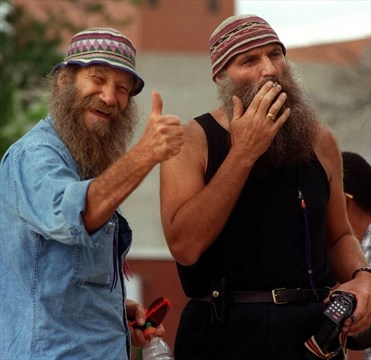
International Malleable Iron Company, Guelph
CBC Radio Doc “Who Is Allan” airs July 1 and 2.
Who is Allan, a radio documentary I produced for CBC Radio kicked off the summer season a couple years ago on Canada Day. It tells the story of the stories people made up about a man they didn’t understand: Allan, a seemingly educated, sophisticated man who appears homeless, well-known to many in his community of Guelph, Ontario. What’s his real story? And what are all the myths?
“Since fear and social norms often forbid us to ask a stranger questions, people have made up stories to try to understand how Allan came to be. Often great big dramatic stories! In this doc, I seek out those stories, then ask Allen himself for his ‘real’ story.”
Listen here:
And Here’s a little blurb the local paper wrote:
CBC Radio to feature Guelph producer’s documentary on Canada Day
Guelph Mercury
By Mercury staff
GUELPH — A radio documentary by multimedia journalist Dawn Matheson will bring a story about Guelph to people across the country on Canada Day.
The story of a longtime Guelph character known as Allen will kick off CBC’s national Summer Radio Season on Canada Day as part of a new program called The Doc Project.
Matheson’s radio documentary, titled “Who is Allen?,” will air on Canada Day, July 1 at 7:30 p.m. and be repeated Thursday at 9:30 a.m. on CBC Radio One.
Matheson was one of about 20 producers chosen in a countrywide call to create radio documentary for CBC in a ‘boot camp’ held in Toronto over the past winter.
The documentary, featuring dozens of Guelph residents and Allen himself, explores the nature of story creation, Matheson says.
“Allen is a well-known figure on Guelph’s streets for the past 35 years, but most don’t really know him,” she says. “He appears to be a lonely mystery with a long tangled beard and torn clothing happily reading the New York Times at Guelph’s Welcome In drop-in centre, park benches throughout downtown and many cafes.
“Many Guelphites assume he is homeless, or that a tragedy has struck him to put him out on the streets. Others say the very literate Allen is a professor performing an elaborate social experiment. Nonetheless, he has fascinated the townsfolk for years, including me,” Matheson says.
“Since fear and social norms often forbid us to ask a stranger questions, people have made up stories to try to understand how Allen came to be. Often great big dramatic stories! In this doc, I seek out those stories, then ask Allen himself for his ‘real’ story.”

James Franco and me…
My bookclub girls were giddy when James Franco was in town shooting a movie– so I thought I’d write them a story about my experience with him:
“Everyone is asking me about my James Franco sighting. Well- I’m not supposed to mention anything. But I have really good privacy settings on this account, so it will be just between us. So, I was just riding by on my bike in the Ward when I saw the crowd. I’m a bit above the celebrity thing, feeling a bit of a celebrity myself at the YMCA, but I stopped to see what the hubbub was all about. Only for a second, I said to myself. I had a lot of spaghetti for dinner and needed the ride.
That is when he spotted me.
At first I totally thought I was imagining it. Was he looking at me? I was behind the teen girls in their tube tops, in August’s ninja turtle bike helmet. It may have just been for a few seconds, but, by God, if felt like at least 10 to maybe 12 seconds. I was sure it didn’t mean much. Not to him. But to me? Me, I felt something. Stirring. Down there. Middle-aged me. I felt ashamed (Mom- who is my Facebook friend).
I turned away and quickly mounted my bike. Well, that’s when I felt what I can only call “a hand” on my shoulder. It was James Franco’s hand-ler.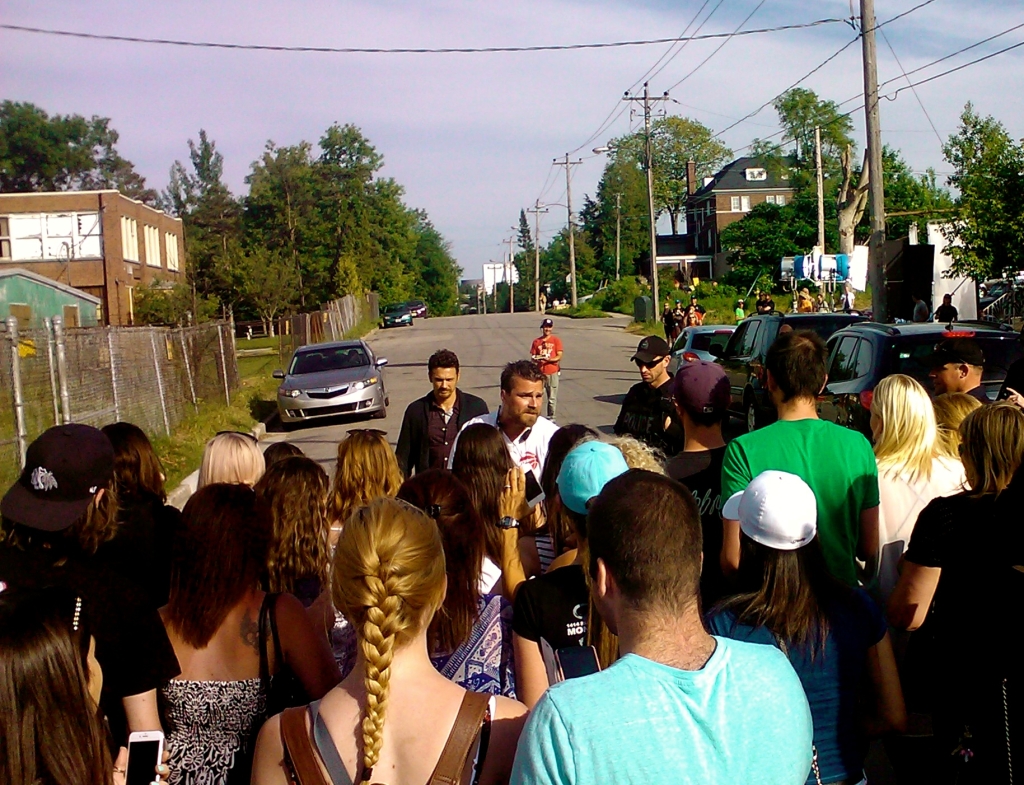
He said to me–and he said it loudly so the whole desperate pathetic crowd could hear–“You are the one. He chooses you. Milady.”
I took this very seriously. It felt like a command I could not refuse. Something long coming.
I said “I have to lock up my bike. It isn’t a good neighbourhood.” He shook his head and threw back his hair. “James will buy you all the bikes you could ever want. He could buy you a golden bike with antler handlebars if you said the word.” And I believed him. He guided me past the barricade towards Jamie’s trailer. I can’t tell you anymore. I promised Jamie.
All I can say is one word. One quiet word, and I’ll be as discreet as I can.
Anal.
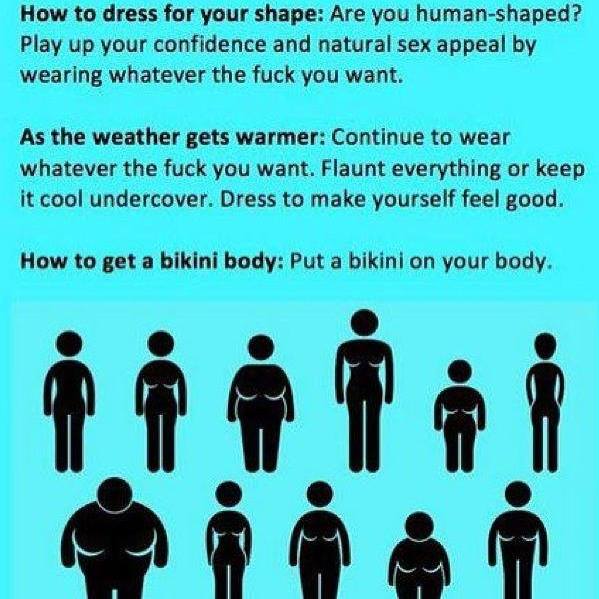
Dear Body (inspired by a poster on How To Get A Bikini Body and a video by Frazey Ford)
(Had to write this fast and post immediately, for, otherwise, it would never have been written…)
Dear Body,
You’ve always been so good to me. I see that now.
You gave me legs that ran fast in grade school track, and hips that could ride a horse, wrists that flicked basketballs into nets, bare feet that climbed the tallest trees in our neighbourhood.
It’s you who I should be thanking for following my obsessively choreographed dance moves I saw reflected back to me in my parent’s bay window.
But me and the window reflection were the only audience members. You see, while you did mostly what I asked, you didn’t listen to me for the things I told you were the most important.
I asked you to be skinnier, taller, and more beautiful. I mean, you weren’t terrible, but you certainly weren’t good enough. You embarrassed me. So I had to punish you with shame, starve you, pluck your hairs out, and keep you in on Friday nights. Even wish you away. You were ruining my life.
I remember hours studying Seventeen Magazine, memorizing every detail on how to make your eyes bigger, your hair straighter, your thighs smaller, your legs longer, your boobs bigger. Why didn’t you get it?
My dad, a world explorer, a lover of ideas and culture and history, would look at me and wonder, why all this time spent on that? He’d hold up The National Geographic and say “Look, pyramids!” He didn’t get it either. What did he know?
And remember when tans were in? I sunburned you so badly that you blistered. And you still wouldn’t hold the colour for long.
You didn’t look good in the clothes I liked either, so I had to wear other clothes, big things that covered you up or things with stripes that made you look smaller than you were. A little smoke and mirrors to distract others from seeing the real you.
Don’t blame me, I had to hide you. I was ashamed of you.
It took me to middle age to realize all the harm I put you through. All in the name of some idea of a single perfect body. Somebody else’s body— who probably doesn’t like her body either.
Today, when I saw that funny little poster on “How To Get a Bikini Body,” you called me out. Yes, I got the message. You are already the body for me. I hadn’t noticed that. Oh, how could I have done this to you for so long? I have so much sadness for you. And for me. And for all that lost time, that hurt, that hatred. So much waste.
I’m so sorry I was embarrassed of you, body. I’m sorry I pushed you away. I hope it is not too late for forgiveness. For some reconciliation? I hope you’ll still have me. You really are good just how you are. I love you.
(Just don’t dare go and age on me now. I’ll try to be gentle with you if you do.)
Here is a gift to us. (I wish this video was around when I was a teen. But I’m grateful for having it now.) So beautiful and free– featuring Frazey Ford joined by many women living well in their bodies: Frazey Ford DONE

The Super Adventurers!! take flight.
From my last post (Super Adventurers!!), you’ll remember that I promised to report back on our first day adventuring into project-directed learning (also called learner-directed) with the idea for August to pick the topic and for us to build some learnin’ around it.
Since we start our flexi-schooling days out at the Guelph Lake Nature Centre watching the birds (see my last post: Morning Bird Call ), it will be no surprise that August picked…
Flight!
Here’s a video showing just how she came up with the theme. See how the mind engages once set free?
http://https://www.youtube.com/watch?v=hX_vNl1hyHg
We took our cues from the master pilots, them birds, and began to assemble materials based on their magical flying apparatus: their wings.
AUGUST: “They have to be light.”
DAWN: “In fact, bird bones are hollow.”
August found reeds (hollow and light) and some long grasses down at the dam. The dollar store took care of the tissue paper and the feathers. From there we went to the library and piled up on planes, fast birds, flightless birds, Amelia Earhart (girl power, wherever we can!), war planes and some fun fictional picture books for the imagination.
(I made a mental note of finding my old copy of Jonathan Livingston Seagull for nighttime reading.)
August: “Peregrine falcon is the fastest animal in the world! More fast than the Cheetah.”
(We learned this from Guelph’s own awesome Bird programme Wild Ontario at our very favourite thing: Nature Guelph
AUGUST: “No. I learned it before that from Nathan and Miranda at the park.”
Then, we called in our special speaker, Captain Matheson.
August: “You mean Grandpa.”
Yes, my dad is a pilot- former bush pilot turned commercial jumbo jet pilot and all around plane geek.
August: “Pilot bunny would fly. He’s small and it was almost Easter.”
Grandpa taught us about the 4 forces of flight.
August: “He got a piece of paper and he blew on the top and it went up!”
Something to do with the fast-moving air having less pressure, and the still air below more pressure so it pushes the paper up. That’s why wings are designed for air to move faster over the top.
August: “Then we went to the park and tested out the wing thing. At first, it fell. Then, bunny flew!”
Dawn: “Grandpa said it needed a tail for balance so it wouldn’t topple over.”
August: “And for it to go straight.”
http://https://www.youtube.com/watch?v=e_jr2BHa4Cw
All in all, August said: “My favorite part was making the wings. I like birds. I wish I could fly.”
Flexi-schooling morning bird calls (video)
August and I start our homeschooling morning at The Guelph Lake Nature Centre.
Here’s a little bird call to start your day:
The Super Adventurers!!!
Learning can only happen when a child is interested. If [she’s] not interested, it’s like throwing marshmallows at [her] head and calling it eating.
Katrina Gutleben
…
August has decided on a name for our flexi-homeschooling day.
THE SUPER ADVENTURERS!!!
Decided isn’t quite the right word, as, like with many kids, she hurled out the superamazingawesome adjectives without much apparent deciphering (like her team name– the Amazing Forever Winners Ever!!!).
I like how she made us (mom and kid team) the subject rather than the activity (homeschooling). This is accurate since we do make or break the day together, and the word choice sure is optimistic (her), which is needed for those of us whose little minds worry about things (me).
We have other news, too. We first based our day around work sent home by August’s teacher (see my last blog pos “I’m a Flexi-Homeschooler”) but, that desk work was the source of much struggle (Booooring!!, according to August) plus the work sent home began to peter out anyhow (teacher has enough to do, understandably).
So, we decided to approach our day in our own way. This is a luxury I am happy to take, as mentioned in the previous blog post: not every parent can take a day a week of unpaid work, and not every teacher gets to work one-one-one with a kid. Might as well make the best of whats we’ze gots.
I do a lot of research (into everything), most often while in the bath with a glass of wine, which is where I was last Tuesday night worrying on the eve of our weekly Super Adventurers’ day. Listening to a few podcasts on UNSCHOOLING, I found the approach to be really liberating. Why not make learning easier by starting with things Gussie (August) actually wants to learn about? To get really radical, how ’bout trusting August? I mean kids are born with such a desire to learn about things– with ALL of their senses– that they eat them.
The added advantage of this method is that it doesn’t require me– who’s first job is to parent– to become someone else, i.e. a professional teacher. She didn’t really like me like that, I’d discovered.
Instead, I would facilitate her interests, muster up all the creativity and possibility I could (which made things super fun for me!). This way, we get to learn together, using our curiosity as our drive with the old idea of life as curriculum; world as classroom. Now that sounds brave, much more worthy of the Super Adventurers!!!
It doesn’t mean abandoning conventional schooling altogether- we will fit in curriculum items without even noticing– as they arise and on an on-demand basis.
The next morn’, as we’ve done all along, August and I started our day at Guelph Lake Nature Centre, watching the birds at the feeder by the lake. I asked her to pick a topic, and we flew from there…
Subscribe to read my next post (with pics, video and an entry from Gussie) to see how our super adventuring went!



